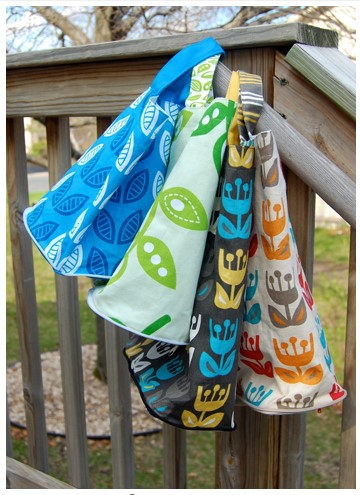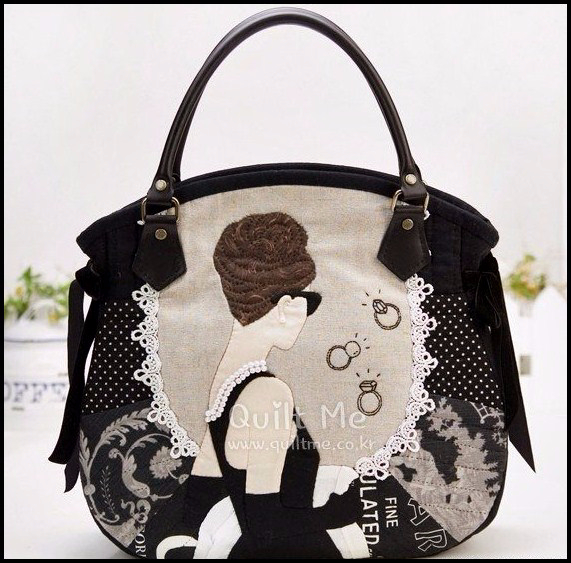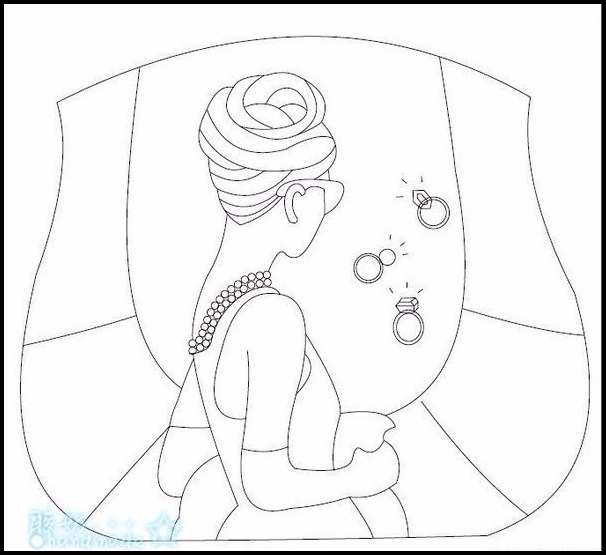-ћетки
-–убрики
- рукоделие (550)
- кукла (83)
- игрушка (70)
- дл€ дома (58)
- бисер (55)
- бижутери€ (43)
- сумка (34)
- рисунок (23)
- обувь (20)
- вышивка (15)
- изонить (11)
- перевод изображений (8)
- паста дл€ лепки, фарфор (8)
- темари (5)
- макраме (5)
- заколки, резинки, ободки (5)
- плетение из газет (3)
- ¬ал€ние (3)
- коврова€ вышивка (2)
- рецепты (328)
- сладкое (50)
- м€со (22)
- пироги (21)
- закуска (18)
- салат (4)
- напитки (3)
- грузинска€ кухн€ (2)
- в€зание спицами (212)
- в€зание крючком (207)
- шитье (94)
- выкройка (24)
- советы (11)
- технологи€ обработки (6)
- белье (5)
- здоровье (82)
- красота (12)
- гимнастика (5)
- худеем (3)
- домоводство (61)
- машинное в€зание (39)
- ƒл€ размышлени€ (23)
- растени€ (19)
- в€зание на вилке (8)
- красиво (7)
- тунисское в€зание (4)
- игры (3)
-ѕоиск по дневнику
-ѕодписка по e-mail
-—татистика
«аписи с меткой сумка
(и еще 173706 запис€м на сайте сопоставлена така€ метка)
ƒругие метки пользовател€ ↓
Ѕраслет оврик Ќќ— » Ўнур ажур белый бижутери€ бисер волосы воротник выкройки вышивка в€зание спицами горловина гост дл€ девочек жакет жаккард заварное тесто игрушка капор кекс колье кофта кошка крем кукла курина€ лапка курица ленточное кружево лето маска мастер-класс микроволновка м€со обувь печенье пирог пирожное платье подушка пуловер пэчворк рисунок рукоделие рулик сбрасываемый накид свинг сельдь советы соус сумка схема сыр тапочки творог торт трафареты узор филейна€ сетка шаль шапка шитье шоколад
ак сшить кожаную сумку. ћ ћарины олесниковой |
Ёто цитата сообщени€ Agnishanti [ѕрочитать целиком + ¬ свой цитатник или сообщество!]
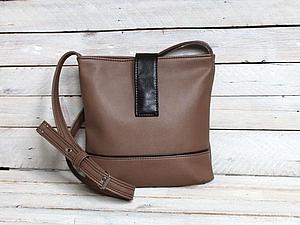
ѕредлагаю вам описание пошива небольшой сумочки с длинным ремешком. ƒумаю, начинающим пригодитс€.
¬ пошиве использован кожзам. ≈го можно заменить на плотную ткань, дл€ совсем-совсем начинающих шить из ткани будет проще. ” мен€ кожзам на плотной тканевой основе, € ни чем его дублировать не буду. ≈сли ваш материал не достаточно плотный, желательно продублировать его клеевой на тканевой основе.
ћетки: сумка мастер-класс |
Ўьем сумочку-чемоданчик: пошаговое фото и выкройка |
Ёто цитата сообщени€ ѕросто_ƒжаззи [ѕрочитать целиком + ¬ свой цитатник или сообщество!]
“акие сумочки очень актуальны летом - они вместительные, симпатичные и подход€т ко многим летним нар€дам. ѕошаговое фото и выкройка сумочки-чемоданчика и представл€ю вам в этом посте. ”верена, что ее пошив дастс€ вам легко, а фото мастер класс поможет пон€ть некоторые мелочи.
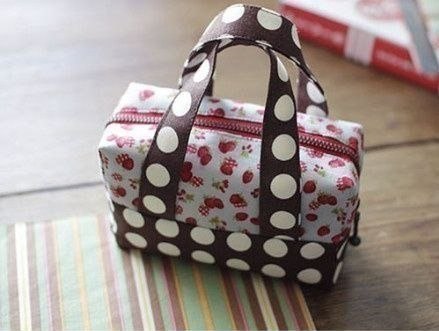
ћетки: сумка мастер-класс |
»стори€ одной сумочки с котенком. ћ »рины Ѕолдыревой |
Ёто цитата сообщени€ Agnishanti [ѕрочитать целиком + ¬ свой цитатник или сообщество!]
¬сем, привет :) ƒаже не знаю, что это на мен€ нашло? Ќе любитель € делать ћ ...
¬прочем, эту работу только с нат€жкой можно назвать мастер классом.
ѕоэтому и название "»стори€ одной сумки". ¬ернее, истори€ рождени€ :)
»так, вот то, что нам может понадобитьс€ в процессе "рождени€".
ћетки: кошка сумка мастер-класс |
»нтересный вариант дорожной сумочки-косметички |
Ёто цитата сообщени€ ћарриэтта [ѕрочитать целиком + ¬ свой цитатник или сообщество!]
Ўитье. »нтересный вариант дорожной сумочки-косметички
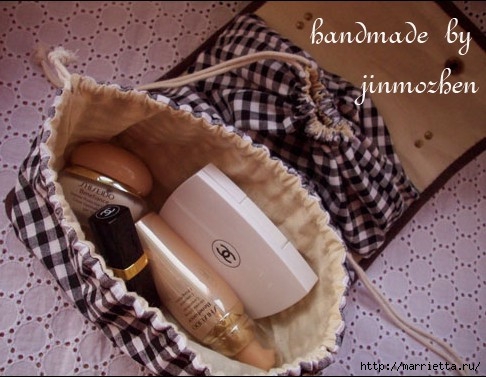
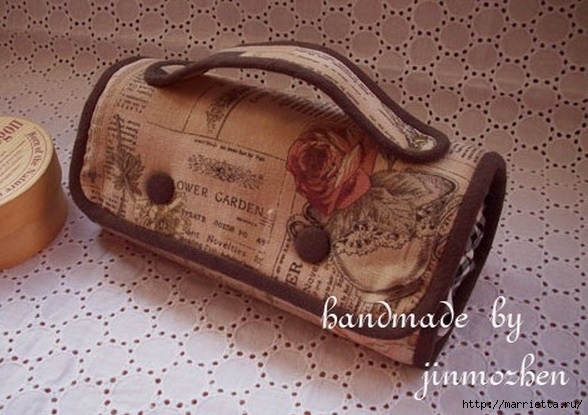
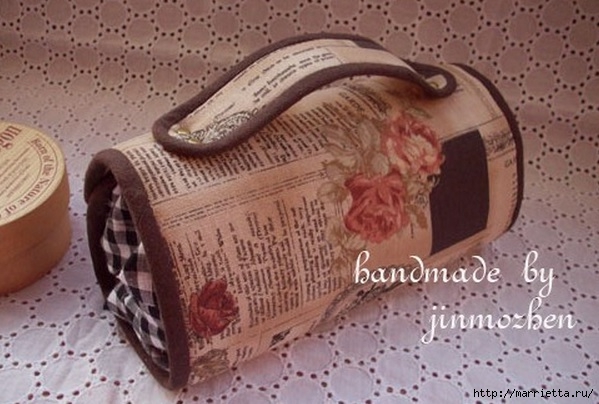
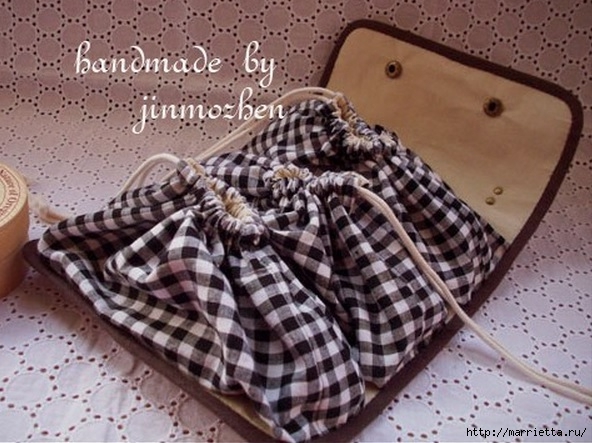
ћетки: сумка |
—оздать выкройку из газеты и сшить спортивную сумку? Ћегко! |
Ёто цитата сообщени€ ћарриэтта [ѕрочитать целиком + ¬ свой цитатник или сообщество!]
’отите сшить спортивную сумку? ѕожалуйста) ѕредставл€ю вашему вниманию фото мастер-класс по пошиву двух спортивных сумок - маленького и большого размера. —амое интересное, чему вы научитесь в данном мастер-классе - так это, своими руками сможете из газеты создать выкройку дл€ сумки
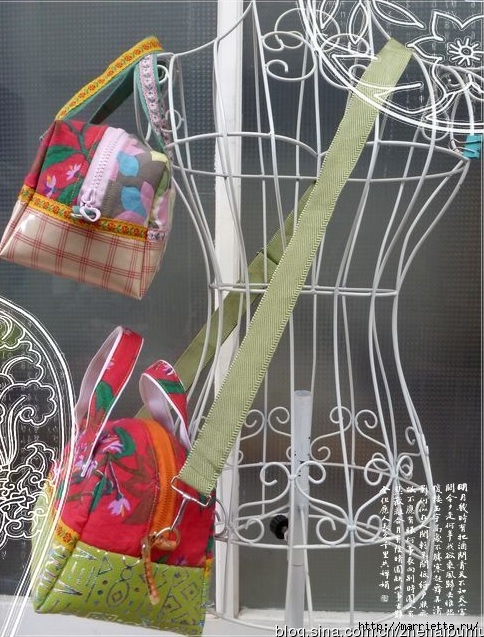
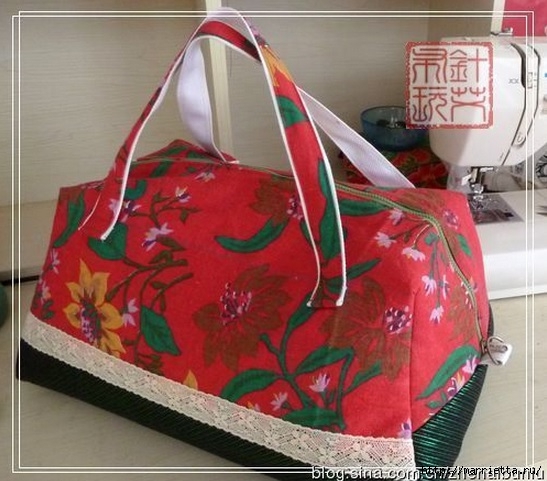
ћетки: сумка |
—умка в кошельке-трансформер.ћ по пошиву |
Ёто цитата сообщени€ svetlana-sh [ѕрочитать целиком + ¬ свой цитатник или сообщество!]
ћаленькие сумочки,конечно из€щны и удобны, но иногда в течение дн€ может понадобитс€ сумка большого размера. ƒл€ таких случаев можно сшить сумку-трансформер, котора€ по желанию может из маленькой косметички превратитьс€ в стильную сумку дл€ покупок.
ћетки: сумка мастер-класс |
ак сшить спортивную сумку. ћастер-класс |
Ёто цитата сообщени€ ћарриэтта [ѕрочитать целиком + ¬ свой цитатник или сообщество!]
ƒорогие рукодельницы) ’очу вам предложить сшить самим спортивную сумку. ƒанна€ сумка - вместительна€ и легка€, что очень удобно дл€ посещений спортзала или поездки в отпуск. —мотрим мастер-класс?
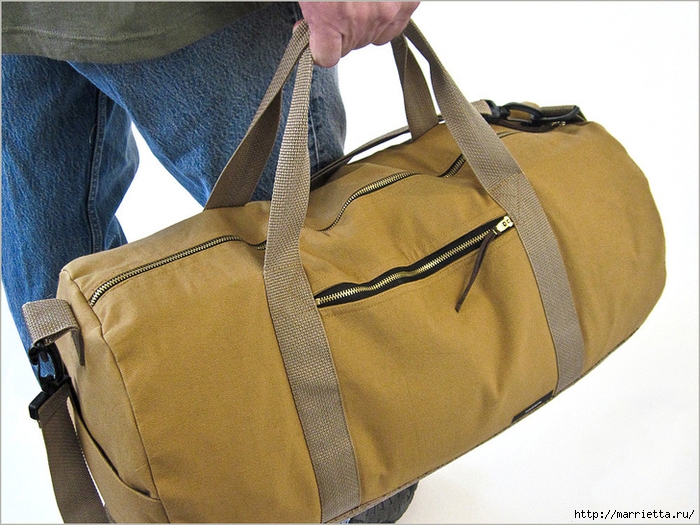

ћетки: мастер-класс сумка |
ƒве сумки: чЄрный кот и бела€ кошка |
Ёто цитата сообщени€ јннушка1707 [ѕрочитать целиком + ¬ свой цитатник или сообщество!]
ћетки: сумка |
—умка сафари |
ƒневник |
Safari Duffle in Canvas & Faux Leather
Can't you picture Harrison Ford slinging this amazing duffle over his shoulder as Indiana Jones?! We blended heavy canvas and faux leather with webbing and brass zipper accents for the dashing exterior. Inside is a tough rip-stop nylon lining. Even if you're not a world-renowned archeologist and adventurer, this bag is is great way to pack your stuff, whether you're heading across town to the gym or getting away for the weekend. Father's Day is coming up, and this would make a very nice gift for your personal action hero. The combination of fabrics, colors and textures has the perfect feel – a little bit retro and a whole lot cool (just like Dad).
Our finished bag looks like you could have grabbed it off the shelf at Eddie Bauer®, but don't let the professional finish scare you off. Achieving a polished end result is often easier than you might think. Read through the project a few times before you start, then if a particular part has you stumped, try doing it with scraps to get the hang of it before moving on to your final fabric. And of course, we offer our trademark S4H details and photos to help you through each step.
We do strongly recommend the heavy canvas and faux leather combo to insure your duffle has the stability and durability you want for active, on-the-go (safari style) use.
The bag finishes at approximately 22" wide x 11" high.
Sewing Tools You Need
- Any Sewing Machine (we recommend the Janome Horizon Memory Craft 8900 QCP)
- Walking foot - the MC8900 QCP has the built-in AcuFeed Flex™ system, which we used (with the optional narrow walking foot VD) - and love. If you do not have a built-in feeding system, we recommend a Walking foot or similar for working with the tricky and/or thick layers.
- Adjustable Zipper foot - again, we used the built-in AcuFeed Flex™ system on the MC8900 QCP (with the optional zipper foot ED). If you do not have a built-in feeding system, we recommend an Adjustable Narrow Base Zipper foot.
Fabric and Other Supplies
- 1 yard of 58"+ wide medium to heavy-weight cotton fabric for the bag top exterior; we used 60" wide medium-heavy weight 9 oz. Canvas in Khaki (#EL-239) from Fabric.com
- ½ yard of 45"+ wide heavy-weight faux leather for the bag bottom exterior; we used 54" wide upholstery weight Faux Leather in Boca Cocoa (item #CW-699) from Fabric.com
- 1 yard of 58"+ wide lightweight nylon fabric for the bag lining; we used 62" wide Rip Stop Nylon in Brown (item #DL-264) from Fabric.com
- 1¼ yards of 45" heavyweight fusible interfacing; we used Pellon's 809 Décor Bond® firm fusible
- 4¼ yards of 1½" poly webbing for the handles and carry strap; we used khaki
- TWO 1½" wide D-rings; we used black plastic
- TWO 1½" wide swivel hooks; we used black plastic
- ONE 1½" slide; we used black plastic
- ONE 22" metal separating zipper; we used brass
- ONE 9" metal zipper; we used brass
- ½ yard of thin leather for the two zipper pulls
- All-purpose sewing thread in colors to match fabric
- Scissors or rotary cutter and mat
- See-through ruler
- Straight pins
- Seam gauge
- Seam ripper
- Iron and ironing board
Getting Started
- Download and print FOUR copies of the Duffle Bag Side Pattern.
-
Download and print TWO copies of the Duffle Bag Side Pocket Pattern.
IMPORTANT: Each pattern consists of ONE 8½" x 11" sheet. You must print the PDF files at 100%. DO NOT SCALE to fit the page. - Cut out the pieces along the solid lines.
- Butt together (do not overlap) and tape the four Duffle Bag Side Pattern pieces to form a circle as shown on the diagram printed on the pattern.
- Butt together (do not overlap) and tape the two Duffle Bag Side Pocket Pattern pieces to form a half circle as shown on the diagram printed on the pattern.
-
From the top exterior fabric (Nutmeg Canvas in our sample), cut the following:
TWO 23" x 12" rectangles
ONE 10" x 15" rectangle
TWO 1¼" x 2" strips for the zipper tabs
Using the assembled Duffle Bag Side pattern, cut TWO side panel circles
Using the assembled Duffle Bag Side Pocket pattern, cut TWO side panel pockets - From the bottom exterior fabric (Boca Cocoa Faux Leather in our sample), cut ONE 14" x 23" rectangle.
-
From the lining fabric (Brown Rip Stop Nylon in our sample), cut the following:
ONE 23" x 36" rectangle
Using the assembled Duffle Bag Side pattern, cut TWO side panel circles
Using the assembled Duffle Bag Side Pocket pattern, cut TWO side panel pockets -
From the interfacing, cut the following:
TWO 23" x 12" rectangles
Using the assembled Duffle Bag Side pattern, cut TWO side panel circles
Using the assembled Duffle Bag Side Pocket pattern, cut TWO side panel pockets -
From the webbing cut the following:
TWO 36" lengths
ONE 60" length
TWO 7" lengths
At Your Sewing Machine & Ironing Board
NOTE: As mentioned above, we used the built-in AcuFeed Flex™ system on our Janome MC8900 QCP with the optional narrow foot VD throughout the entire project. If you don't have a built-in feeding system, attach a Walking foot or similar. It helps keep all the layers involved in this project feeding more smoothly.
Apply the interfacing
-
Following manufacturer's instructions, fuse the interfacing to the wrong side of the two 23" x 12" exterior panels, the two exterior side circles, and the two exterior side pockets.

Side pockets
- Find the two exterior pocket pieces (with interfacing) and the two pocket lining pieces.
-
Place one lining piece and one exterior piece right sides together, aligning all the raw edges. Pin in place along the top edge only.

-
Using a ½" seam allowance, stitch along the top edge only.

-
Press flat.

-
Fold the lining to the wrong side of the pocket. Press again.

- Edgestitch on the right side along the top edge only.
-
Run a second line of stitching ¼" from the first.

- Repeat to create the second pocket.
- Find the two exterior side circles (with interfacing).
-
Place a finished pocket on each side circle, matching the curved raw edges. Pin in place.

- Machine baste each pocket in place on its circle within the ½" seam allowance, an approximate ⅜" seam allowance is good.
- Set the side panels aside.
Front zippered pocket
- Find ONE of the two 23" x 12" exterior panels (with interfacing), the 10" x 15" exterior pocket panel, and the 9" zipper.
- Place the 23" x 12" panel wrong side up and flat on your work surface. Orient it properly: 23" wide x 12" high.
- Find the exact center of the panel (11½" from either side). Mark this point with a pin.
-
Using your fabric pencil and see-through ruler, measure 4½" to the left of the center point and mark, then measure 4½" to the right of the center point and mark. Measure 3½" down from the upper edge and make an intersecting mark. Draw a connecting 9" horizontal line.

-
Draw a second line ½" down from the first line and parallel. Join the lines at each end to create a box.

- Place the 10" x 15" panel wrong side up and flat on your work surface. Orient it properly: 10" wide x 15" high.
-
Draw a matching box to what you just drew on the top 10" edge, positioning it ½" from the top raw edge and centered side to side.

-
Place the exterior panel and the pocket panel right sides together aligning the two drawn boxes. The easiest way to line up the boxes is to place a pin at each upper corner on the wrong side of the exterior panel.

-
Then, match up the pin points with the pocket on the other side.

-
With the wrong side of the exterior panel facing up, stitch around the marked box through both layers.

-
Cut through the center of the box, then clip into each corner.

-
Pull the pocket to the inside through the opening, smoothing the corners and edges of the box as best you can. Press.

-
Flip over and place the opening over the 9" zipper, centering the zipper's teeth. Pin in place.

-
Edgestitch in place around all four sides.

-
Run a second line of stitching ¼" from the first along the BOTTOM of the box opening only.

NOTE: Don't worry too much about keeping your corner pivots and end stitching super-duper perfect; the ends of the opening will be hidden by the webbing when complete. -
From the wrong side, fold just the pocket layer in half, bringing the lower edge of the pocket up so it aligns with the upper edge. Pin along the top.

-
Flip to the right side. Run a second row of topstitching ¼" from the TOP edgestitching along the TOP of the box opening (matching what you did previously along the bottom edge). You are stitching through all the layers, catching and securing that upper edge of the pocket you just folded up and pinned. Press well.

Side handles
- Find the two 36" lengths of webbing.
- Fold each length in half to find the exact center. Mark with a pin.
- Measure 3½" to the left of the center point and mark with a pin.
-
Measure 3½" to the right of the center point and mark with a pin.

- Remove the center pin.
- Fold the webbing in half, matching the long edges.
-
Edgestitch between the left and right pin points to create the handle.

- Find both exterior side panels, the one with the pocket and the plain panel.
- On the panel with the pocket, lay one handle length in place. The outer edge of the webbing should be positioned 5½" in from each side. The inner edge of the webbing should just cover either end of the zipper "box." The ends of the webbing should be flush with the lower raw edge of the panel. Be careful to insure the handle loop is not twisted.
-
Measure 2½" down from the top raw edge along each side of the webbing and mark with a pin, placing it horizontally across the webbing. This is where you will stop sewing and turn to go across and back down the webbing.

- Edgestitch each side of the handle in place, staying as close to the edge as you can. We also lengthened our stitch. Start at the bottom, stitch up one side, stop at the 2½" mark, pivot, stitch across, pivot, and stitch down the opposite edge to complete. This edgestitching will also finish the side seams of the inside pocket.
-
At each 2½" point, reinforce the strap with a 1½" "X Box."

-
Position the second webbing handle on the remaining plain panel, exactly matching the front, and repeat the steps to create the opposite side of the bag.

Attach the bottom exterior panel
- Find the 14" x 23" faux leather panel.
- Place one completed exterior panel on either side of faux leather panel, right sides together, aligning the the 23" raw edges. Pin in place.
- Using a ½" seam allowance stitch each seam. Finger press the seam allowance towards the faux leather. Do not press with an iron. Faux leather doesn't like the heat of an iron!
-
Flip the sewn panel over and run two lines of topstitching. One seam should be approximately ⅛" from the seam. Run a second seam ¼" from the first.

-
Stay stitch both long sides of the assembled exterior ½" from the edge.
NOTE: Stay stitching is a single line of stitching that simply helps stabilize the fabric to prevent stretching or distortion. In this project, it will also provide us with a seam line to follow later in the instructions.
Add the top zipper
- Find the 22" zipper and the two 1¼" x 2" end tabs.
-
Place one tab on each end of the zipper. The strip and the zipper are right sides together and the raw ends are flush. Pin in place.
NOTE: We based the width of these tabs on our zipper. Cut your tabs as needed to best fit your zipper; you want the tab to fit within the zipper tape. -
Using a ½" seam allowance, stitch the zipper tabs in place. You may need to "hand walk" the foot across the zipper to avoid breaking the needle.

-
Press the zipper tabs away from the zipper on each end.

- Lay the bag exterior right side up and flat on your work surface.
-
Place the zipper face down along the top on the side with the pocket, aligning the edge of the zipper tape with the raw edge of the strip. Pin in place along the top half of the zipper tape only.

-
Using an adjustable zipper foot or a built-in feeding system (we used our MC8900 AcuFlex™ ED Zipper foot), stitch along the zipper teeth. Your seam should be as close as possible to the teeth.

- Fold the fabric down and away from the zipper teeth. Lightly press. Pin if needed.
-
Edgestitch in place, approximately ⅛" from the fold.

-
Run a second seam ¼" from the first.

-
Repeat to attach the remaining raw edge of the panel to the opposite side of the zipper.
NOTE: This second side will be a little more challenging because your bag is now a tube rather than flat. However, both ends are open, giving you the flexibility to maneuver your fabric under the needle.
D-rings and tabs for side panels
- Find the two 7" lengths of webbing, the two D-rings and the side panels with the pockets basted in place.
- Slip each 7" strip through one of the D rings. Fold into place so one end extends 1½" below the other. Pin in place.
-
Fold up that extra 1½" on each tab, enclosing the upper end's raw edge.

- Find the two circular end units
-
Place one tab on each end unit, centering it above the pocket. The D-ring should be aligned with the curved top edge of the pocket as shown in the photo below. Stitch the tab in place with a 1¼" "X box" stitch.

Set in the side panels
- Find the bag "tube" and the two end panels.
-
Clip the raw edges of the two open ends of the tube. Clip approximately every ¾", taking care to not cut through the stay stitching.

- Place a pin at the exact center top, exact center bottom and top edge of each side pocket. Think of it like a clock, with pin points at 12:00, 3:00, 6:00 and 9:00.
- On the main tube, the corresponding 12:00 point will be the center of the zipper. Keeping the zipper in the exact center, flatten the tube to find the opposite 6:00 point. Then, flatten the tube in the opposite direction to find the 3:00 and 9:00 points. Place marking pins at all these points.
- Place the side panel right sides together with circular opening of the barrel, aligning all the pin points. Easing the fabric, fill in the rest of the circle with pins. If you've done garment sewing, this is very similar to putting in a sleeve. You can also clip around each of the side panels (again staying well within the the seam allowance) to help with the easing.
-
Stitch the layers together, following the original line of stay stitching.

- Turn the completed bag right side out.
Create and insert the lining
- Find the 23" x 36" lining panel and the two lining side circle panels. As you did with the exterior panel, stay stitch each 36" side of the lining.
- Clip to, but not through, the line of stay stitching every ¾" - again as you did with the exterior panel.
- With low heat, press under ½" along the each 23" edge.
- Following a similar method as you did for the exterior, pin the lining to the circles, leaving a ½" gap at what will be the top of the lining. When inserted into the bag, this gap will allow the lining to smoothly straddle the zipper.
- Sew the side circles in place, following along in the original line of stay stitching. This will be a bit easier than stitching the exterior since you are working with the lining panel as a flat piece.
-
With the completed lining still wrong side out, insert it into the exterior bag. Pin the lining in place along each side of the zipper, covering the lines of stitching.

-
Topstitch the lining in place, following along in the existing stitch line closest to the zipper.

-
The photo below shows how that opening in the lining sits over the zipper. It looks a little messy when you see everything close-up like this, but it's all actually hidden inside the bag and results in a professional finish. We thought it was important for you to see why that little space is left open in the lining end seams.

Create the shoulder strap
- Find the remaining 60" length of webbing, the slider and the two swivel clips.
-
Insert one raw end of the webbing through the center of the slider. Pull it through so it just clears the slider. Turn under the raw end approximately ½" and stitch in place as close to the slider as possible.

-
Place the slider end, with the webbing attached, wrong side up on your work surface. Thread the opposite raw end through one swivel clip, threading from the bottom and out the top.

-
Continue feeding the webbing through, pulling it across and over the portion laying flat, then threading it back through the slider.

-
Finally bring the opposite raw end through the remaining swivel clip, threading it from the top to the bottom. Pull it through as above, turn under the raw end, and stitch in place as close to the hook as possible

- Clip the strap in place on the D-ring tabs to complete.
Contributors
Project Design: Alicia Thommas
Sample Creation and Instructional Outline: Michele Mishler
ћетки: сумка мастер-класс |
—умочка дл€ девочки HELLO KITTY. ¬ыкройка |
Ёто цитата сообщени€ јннушка1707 [ѕрочитать целиком + ¬ свой цитатник или сообщество!]
ћетки: дл€ девочек сумка мастер-класс |
—умочка или косметичка просто и быстро |
Ёто цитата сообщени€ јннушка1707 [ѕрочитать целиком + ¬ свой цитатник или сообщество!]
Ўьем весеннюю сумочку за 15 минут
—ЋќВј јВ“ќ–ј: Tulip Accessories (Ќаталь€)
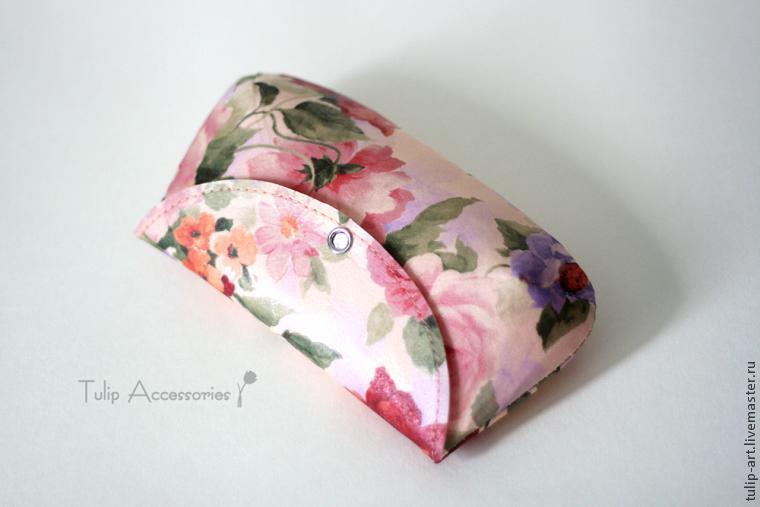
В первый день весны мне очень захотелось сделать что-то легкое и цветочное, и родилась иде€ термотрансферной выкройки-принта дл€ простой и милой сумочки, которую можно сделать в 5 простых шагов буквально за 15-20 минут. —умочка получаетс€ миниатюрна€, ее можно использовать как косметичку, пенал, очечник или футл€р дл€ чего-нибудь еще. Выкройку можно увеличить и распечатать на двух листах, тогда получитс€ сумочка побольше, котора€ сможет стать весьма вместительной косметичкой или даже клатчем.
ћетки: сумка |
Ўьем летнюю сумочку из хлопка. ћастер-класс |
Ёто цитата сообщени€ ћарриэтта [ѕрочитать целиком + ¬ свой цитатник или сообщество!]
Ўьем летнюю сумочку из хлопка. ћастер-класс
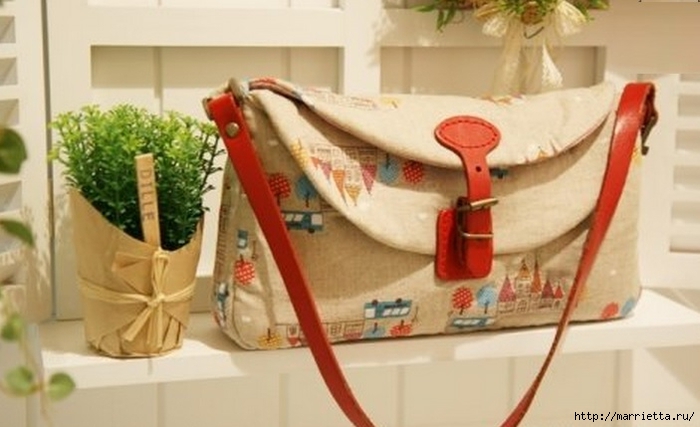
ћетки: сумка мастер-класс |
ћастер-класс: шьем Ђгламурнуюї экосумку-трансформер |
Ёто цитата сообщени€ Valentina_iv [ѕрочитать целиком + ¬ свой цитатник или сообщество!]
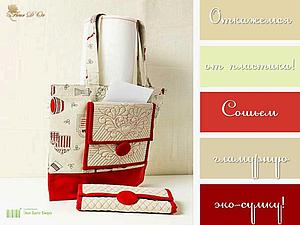 ’очу предложить вашему вниманию мастер-класс по пошиву «гламурной» экосумки-трансформера!
’очу предложить вашему вниманию мастер-класс по пошиву «гламурной» экосумки-трансформера!
ѕочему экосумка?
«адумайтесь, сколько пластиковых сумок вы ежегодно покупаете или получаете бесплатно в магазинах? Ќе знаете? ѕримерно 5-10 штук в день на каждого человека, а в целом в мире — несколько триллионов штук в день! ѕластики — чрезвычайно долговечный материал: их полное разложение может длитьс€ до 1000 лет. ƒаже так называемые биоразлагаемые пластики не решают проблему — они не разлагаютс€ до конца, а просто распадаютс€ на меньшие фрагменты. »х даже сложнее перерабатывать.
ћетки: сумка мастер-класс |
ак сшить сумку - сакво€ж. ‘ото мастер-класс |
Ёто цитата сообщени€ ћарриэтта [ѕрочитать целиком + ¬ свой цитатник или сообщество!]
ак сшить сумку - сакво€ж. ‘ото мастер-класс

ћетки: сумка мастер-класс |
ак сшить модную сумку - сакво€ж- ћ из —траны ћастеров |
Ёто цитата сообщени€ Svetlana_ARTSVET [ѕрочитать целиком + ¬ свой цитатник или сообщество!]
»скала сегодн€ себе выкройку какой-нибудь интересной сумочки и нашла замечательный мастер-класс.
» вовсе необ€зательно шить ее из кожи, подойдет люба€ понравивша€с€ вам плотна€ ткань.
—мотрим ћ .
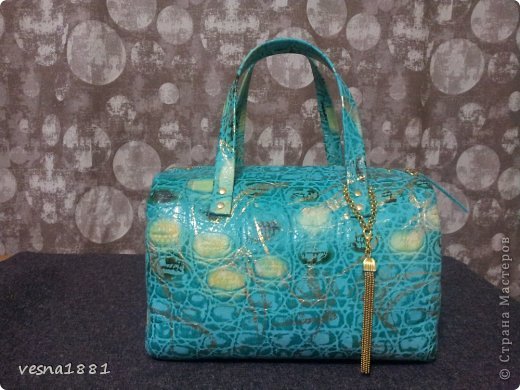
¬есь процесс работы занимает 18 часов (с вычетом перерывов на отдых, обед, сон).
ћастер по пошиву дизайнерских сумок “ать€на ¬есна VESNA

»так, сегодн€ € вам расскажу как € шью сумки из кожи. ѕолистав журналы моды за 2014г. выбираю модную в этом году модель сумочки - сакво€ж, привношу кое-какие авторские изменени€ и приступаю к работе. ƒл€ работы мне потребуютс€: кожа (предпочитаю только натуральную и высокого качества), уплотнитель клейкий дл€ придани€ желаемой формы сумке, ткань дл€ подкладки и кармашков, молнии дл€ сумки и кармашков, картон, выкройка сумки, линейка, нож или ножницы, карандаш дл€ кожи, шило, дырокол дл€ кожи, клей, скрепки, молоток, заклЄпки , швейна€ машина, аппарат дл€ вставки кнопок и заклЄпок.
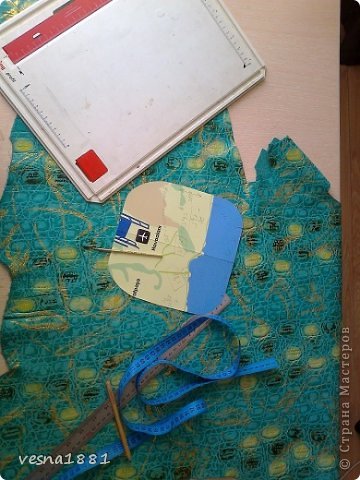
ћетки: сумка |
Ћетн€€ больша€ сумка с этническим узором (крючок) |
Ёто цитата сообщени€ галина5819 [ѕрочитать целиком + ¬ свой цитатник или сообщество!]
»нтересна€ и €рка€ в€зана€ модель крючком с этническими мотивами. Ёта сумка вместительна€ и удобна€, подойдет и дл€ похода на пл€ж, и по магазинам. ќт дизайнеров Drops.

–азмеры сумки: ширина — 43 см, высота — 33 см.
ћатериалы дл€ в€зани€: вс€ пр€жа DROPS PARIS (стопроцентный хлопок, 75 м на 50 г) следующих цветов: 200 г темно-серой (є24), 150 г абрикосовой (є01), 100 г светло-серой (є23), 100 г €рко-розовой (є06), 100 г белой (є17), 50 г горчичной (є41); крючок 4,5 мм.
ѕримечание: если вы решите св€зать однотонную сумку, то вам нужно 600 г пр€жи DROPS PARIS.
ѕлотность в€зки: 13 —Ќ и 6 р€дов, св€занные двойной нитью, состав€т образец 10 на 10 см.

ћетки: сумка |
–учки дл€ сумок крючком. ћастер-класс + 2 видео |
Ёто цитата сообщени€ »римед [ѕрочитать целиком + ¬ свой цитатник или сообщество!]
http://robertacrocheecia.blogspot.com/2011/01/pass...cas-de-croche-para-bolsas.html
ƒевочки, кто из ¬ас в€зал или собираетс€ в€зать сумку, наверное задавались вопросом: что делать с ручками? ƒалеко не всегда то,что есть в продаже (если есть) подходит по стилю и размеру. ћен€ привлек этот вариант своей универсальностью. —мотрите сами!
ѕересказ мой ![]() »римед
»римед





ћетки: сумка |
сумки с фигурами девочек |
Ёто цитата сообщени€ The_blond_goddess [ѕрочитать целиком + ¬ свой цитатник или сообщество!]
ћетки: сумка шитье |
сумка-самобранка или сумка-"раскладушка" дл€ пикника |
Ёто цитата сообщени€ Maja2012 [ѕрочитать целиком + ¬ свой цитатник или сообщество!]

—умка дл€ обеда или пикника на природе. ¬се зависит от размера. ћатериал, декор — все на ваш вкус. Ќо иде€ мне понравилась.


ак вариант — сумка дл€ переноски/хранени€ утюга, котора€ сама может служить гладильной поверхностью. Ќо, как мне кажетс€, также подойдет дл€ переноски продуктов дл€ пикника.
»сточник
»сточник
ћетки: сумка шитье |
сумка-шоппер с двойной застежкой. ћ |
Ёто цитата сообщени€ Maja2012 [ѕрочитать целиком + ¬ свой цитатник или сообщество!]

ак сшить сумку-шоппер с двойной магнитной застежкой. Ёту модель можно воплотить почти в любой коже, и она каждый раз будет другой. ≈е просто шить. ќна – вне сезона и моды. ѕодробна€ инструкци€ и точна€ выкройка – все дл€ вас.
Ёту модель можно воплотить почти в любой коже, и она каждый раз будет другой. ≈е просто шить. ќна – вне сезона и моды. ѕодробна€ инструкци€ и точна€ выкройка – все дл€ вас. ѕриступайте к работе!
ћатериалы:
- ожа, около 100 дециметров. ƒл€ этой модели она может быть любой, за исключением очень тонкой (такую придетс€ проклеивать изнутри специальным дублерином дл€ кожи, но лучше выбрать что-то плотное и основательное).
- ћолни€ дл€ внутреннего кармана, возможно, пластикова€ вита€ є5 или є7, или металл в цвет внешней фурнитуре.
- ћатериал дл€ подкладки.
- ƒве пары магнитных замков.
- √отовые ручки. ≈сли там, где вы живете, нет специализированных магазинов, в которых продаетс€ така€ продукци€, ручки можно сделать из той же кожи и просто застрочить посередине.
- ’ольнитены дл€ прикреплени€ ручек.
- ∆естка€ прокладка дл€ дна (€ использую клеевой изолон є3 или є5).
- Ќитки дл€ сшивани€ кожаных деталей и отстрочки.

Ћекала

Ќачало работы:
- ѕервым делом нужно утончить кра€ кожи на нескольких детал€х. ќговорюсь сразу – € понимаю, что машина дл€ спуска кожи есть лишь у единиц из тех, кто будет читать мой мастер-класс. ј тем, у кого она есть, такие инструкции давно уже не нужны. “ем не менее, € все же остановлюсь на этом моменте: если кожа толста€, то верхний край будущей сумки, одну из сторон детали внутренней обтачки верха сумки, а также дно по бокам, и кра€ передней и задней стенок надо утончить, проклеить и подогнуть. »ли используйте кожу с красивым срезом и делайте все в обрезку.

2. —обираем ботан – узел, состо€щий из деталей боковых стенок и дна. ƒно нашиваетс€ внахлест на бочка.

3. ¬от как выгл€дит в сборе ботан и подготовленные (со спущенными, загнутыми и проклееными кра€ми) передн€€ и задн€€ стенки сумки. ƒл€ сбора деталей € использую специальный скотч дл€ кожи. ¬се детали перед сострачиванием € фиксирую им, хот€ многие, как € знаю, пользуютс€ простым резиновым клеем.

4. ѕри помощи скотча скрепл€ем готовый ботан с одной из стенок, аккуратно прищипываем клипсами по нижним углам, чтобы детали не расходились при сшивании.

—тенку к ботану € пришивала на рукавной машине, так как в моем случае эта деталь нашита снаружи. Ќо вам ничто не помешает делать то же самое на пр€мострочке, если вы шьете из кожи м€гче, чем мо€, или сшить детали с изнанки, либо так же внахлест, как €, но без подгибки, а в обрезку.

5. ѕриклеиваем вторую стенку, таким же образом пришиваем ее. ѕолучилось «тело» будущей сумки.



„тобы швы «улеглись», их хорошо простучать молотком. “олько без фанатизма, чтобы не оставить следов на коже.

«агибаем и фиксируем клипсами стыки состроченных деталей вверху, это толстые места, которые могут разогнутьс€.

6. “еперь надо вклеить кусок изолона, благодар€ которому дно будет держать форму. ¬ырезаем пр€моугольник в размер и приклеиваем.



ѕерва€ часть работы готова, приступаем к изготовлению подкладки.
я почти уверена, что большинство из вас, уважаемые читатели, знает, как шить карман на молнии с рамкой. Ќа вс€кий случай, освежаю знани€ (сама €, когда училась шить, какое-то врем€ делала это неправильно, поэтому надеюсь, что кому-то смогу помочь. “ак что если вы знакомы с технологией, просто пропустите пункт є7).
7. »так, на одной из стенок подкладки (она полностью дублирует покрой сумки) будет карман на молнии с кожаной рамкой. ¬ырезаем эту самую рамку, размечаем на ткани ширину прореза, разрезаем посередине и в уголках и заворачиваем наизнанку (€ использую дл€ этого все тот же узкий скотч дл€ кожи, он и ткань отлично держит). ¬ общем, выполн€ем стандартные операции по пошиву кармана с кожаной рамкой.





»знутри вклеиваем молнию, снаружи клеем фиксируем кожаную рамку, прикрепл€ем изнутри мешковину и начинаем пришивать



—начала, перекинув мешковину наверх, прошиваем внутреннюю нижнюю часть «окошка», потом, перекинув с изнанки мешковину вниз, начина€ с боков и разворачива€ иглу под пр€мым углом, прошиваем торцы и верх внутреннего «окошка».

ѕосле этого, начав сверху, прошиваем рамку по наружному контуру (не забыв перекинуть мешковину наверх, когда игла приблизитс€ к нижней части контура).

8. ѕосле этого выкраиваем и пришиваем на подкладку накладной кармашек. Ќе забыв изнутри продублировать с изнанки швы плотной тесьмой.


9. “еперь «собираем» подкладку по тому же принципу, что и сумка – ботан и две стенки.

10. огда подкладка готова, € советую вложить ее внутрь сумки и прикрепить вчерне клипсами за край, чтобы убедитьс€, что размер совпадает с размером сумки.

11. ѕриступаем к прикреплению ручек. –учки € купила в специализированном магазине готовые, из кожзама – можно выбрать контрастные по цвету, и в промышленных услови€х они очень аккуратно сделаны (самосто€тельно такие красивые, ровные ручки сшить не каждый сможет).
»так, размечаем в центре передней и задней стенок 12-ти сантиметровое рассто€ние и пробиваем пробойником и молотком отверсти€, чтобы приклепать ручки. ћожно было пришить их на машине – кому что нравитс€.



ѕримечание:
я уже упоминала в описании материалов, что ручки можно сшить и самосто€тельно. ƒл€ этого выкроите по паре деталей нужной длины (обычно это 50-55 см с припуском на пришивание или приклепывание внутри). Ўирину нужно выкроить с запасом около сантиметра. —клейте резиновым клеем по две детали дл€ каждой ручки (чтобы они стали двухсторонними). ƒайте высохнуть и очень острым ножом по железной линейке отрежьте сначала одни ровный край, а затем, отмерив нужную ширину (от 3,5 до 4 см), выровн€йте второй край. «атем сострочите посередине, примерно на ширине 20 см, кра€ полоски, получив нужное утолщение – тот участок ручки, который будет лежать у вас на плече, или который вы будете брать руками.
12. ѕример€ем деталь обтачки верха, к которой будет крепитьс€ подкладка. “ак как она должна идеально совпадать по размеру с верхом сумки, стоит клипсами прикрепить ее по всей окружности, чтобы убедитьс€, что размер соответствует.


13. “еперь пришиваем к детали обтачки верха подкладку и снаружи отстрачиваем шов.



14. ќсталось изготовить четыре детали с магнитными замочками, которыми будет застегиватьс€ сумка. »х предстоит вшить между верхом сумки и деталью обтачки посередине передней и задней стенок и на боковых стенках.

«астегиватьс€ они будут крест-накрест, поверх друг друга. я предлагаю так же собственную идею, как крепить эти детали внутри, когда вы не хотите застегивать сумку на замочки. ѕод каждой деталью с магнитной кнопкой на деталь обтачки верха надо пришить узкую пату, в которую можно будет вставить ремешок. Ёто очень хорошо видно на фото выше.

онечно, вам не об€зательно делать все эти мелкие детали, потому что в расправленном виде эта сумочка тоже хороша. “акже вы можете просто вправл€ть боковые стенки внутрь, без застегивани€ – они будут держатьс€. «амочки нужны скорее, чтобы сделать сумку интереснее.
15. », наконец, последн€€ операци€: склеиваем деталь обтачки верха сумки, детали застежек и собственно сумку, и пришиваем одним швом.

ћетки: сумка шитье |







